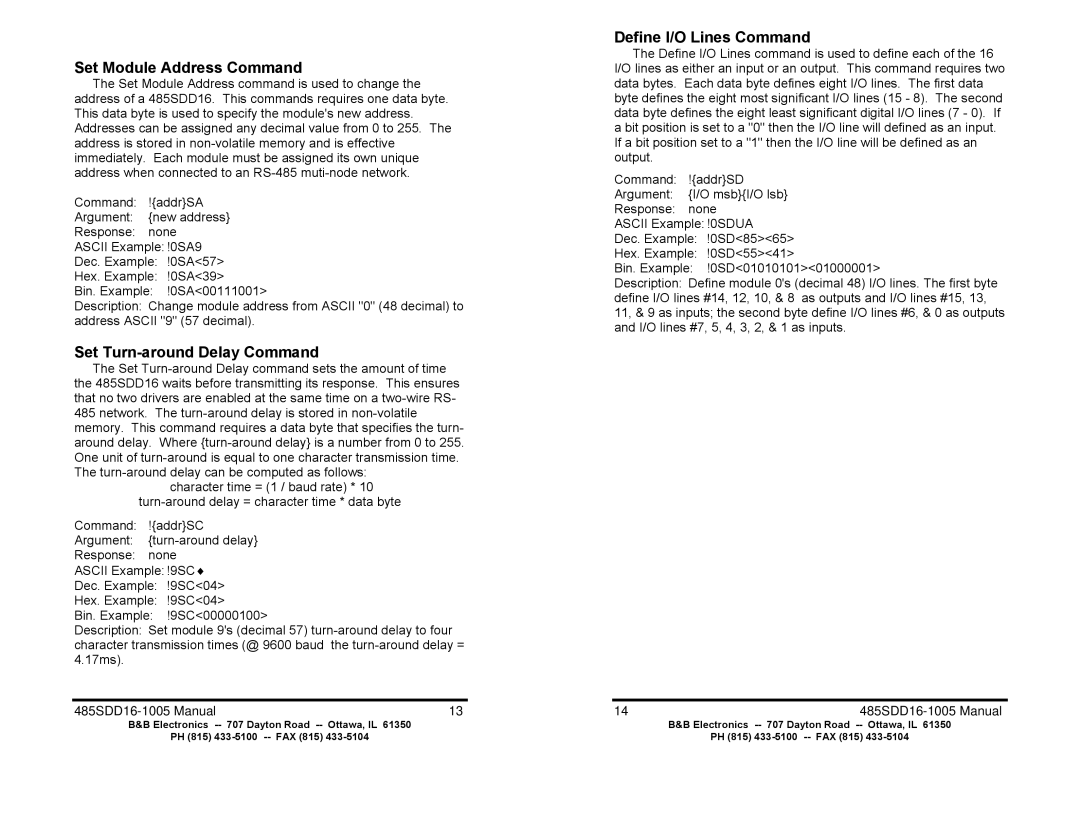Set Module Address Command
The Set Module Address command is used to change the address of a 485SDD16. This commands requires one data byte. This data byte is used to specify the module's new address. Addresses can be assigned any decimal value from 0 to 255. The address is stored in
Command: !{addr}SA
Argument: {new address}
Response: none
ASCII Example: !0SA9
Dec. Example: !0SA<57>
Hex. Example: !0SA<39>
Bin. Example: !0SA<00111001>
Description: Change module address from ASCII "0" (48 decimal) to address ASCII "9" (57 decimal).
Set Turn-around Delay Command
The Set
character time = (1 / baud rate) * 10
Command: | !{addr}SC |
Argument: | |
Response: | none |
ASCII Example: !9SC♦
Dec. Example: !9SC<04>
Hex. Example: !9SC<04>
Bin. Example: !9SC<00000100>
Description: Set module 9's (decimal 57)
character transmission times (@ 9600 baud | the |
4.17ms). |
|
|
|
| 13 |
Define I/O Lines Command
The Define I/O Lines command is used to define each of the 16 I/O lines as either an input or an output. This command requires two data bytes. Each data byte defines eight I/O lines. The first data byte defines the eight most significant I/O lines (15 - 8). The second data byte defines the eight least significant digital I/O lines (7 - 0). If a bit position is set to a "0" then the I/O line will defined as an input. If a bit position set to a "1" then the I/O line will be defined as an output.
Command: !{addr}SD
Argument: {I/O msb}{I/O lsb}
Response: none
ASCII Example: !0SDUA
Dec. Example: !0SD<85><65>
Hex. Example: !0SD<55><41>
Bin. Example: !0SD<01010101><01000001>
Description: Define module 0's (decimal 48) I/O lines. The first byte define I/O lines #14, 12, 10, & 8 as outputs and I/O lines #15, 13, 11, & 9 as inputs; the second byte define I/O lines #6, & 0 as outputs and I/O lines #7, 5, 4, 3, 2, & 1 as inputs.
14 |
B&B Electronics | B&B Electronics |
PH (815) | PH (815) |
